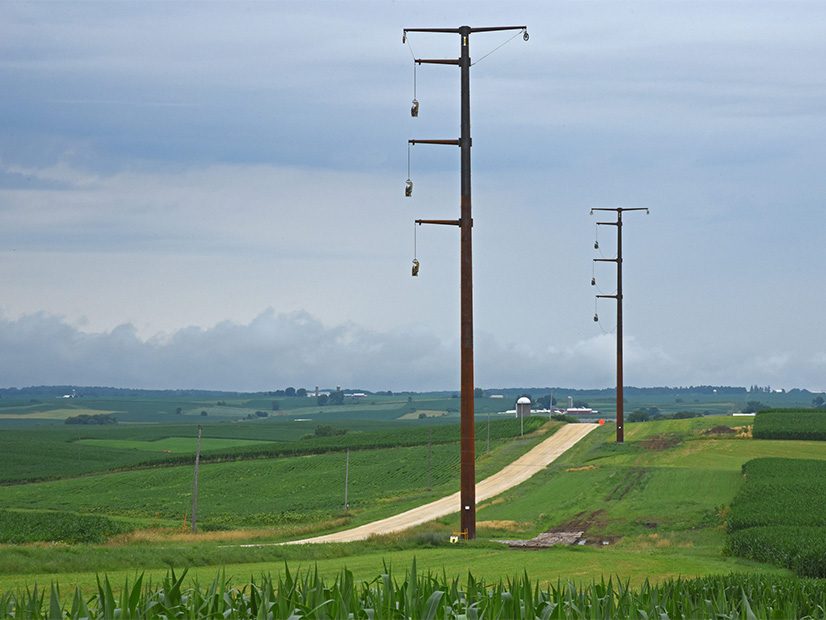Two of the developers behind the embattled Cardinal-Hickory Creek transmission line have appealed to lift an injunction on the last mile of the project that will intersect a wildlife refuge in Wisconsin and Iowa.
ITC Midwest and Dairyland Power Cooperative filed last week with the 7th U.S. Circuit Court of Appeals to rescind a preliminary injunction on the 345-kV line issued in the U.S. District Court for Western Wisconsin.
The decision last month halted a land swap between the utilities and the U.S. Fish and Wildlife Service (FWS) to trade more than 35 acres in Wisconsin for almost 20 acres of the Upper Mississippi River National Wildlife and Fish Refuge in Iowa, which will be cleared for construction of the line’s final 1.1 miles. (See Judge Pauses Final Mile of Controversial Cardinal-Hickory Creek through Wildlife Refuge.)
Line developers ITC Midwest and Dairyland are asking the court to expedite treatment of their request.
The utilities said lifting the injunction and allowing construction on the last mile of the line “would replace existing lines now located in a much more environmentally sensitive area” of the Upper Mississippi River Wildlife and Fish Refuge. They also argued that the injunction lacked sound reasoning and relied on previously vacated findings and that the district court “erroneously presumed entitlement to injunctive relief.”
The two also said plaintiffs Driftless Area Land Conservancy, Wisconsin Wildlife Federation and National Wildlife Refuge Association have overstated the impact of construction on the refuge. ITC and Dairyland said the area where the final swath of towers will be erected is “already fragmented by an existing road, maintains little to no wildlife or habitat value, is difficult to maintain and contains invasive reed canary grass.”
ITC and Dairyland said that as a consequence of the preliminary injunction, Cardinal-Hickory Creek cannot meet its anticipated June 28 in-service date, and a revised date cannot be set until “further developments occur in the pending litigation, including a termination of the injunction, allowing for closing on the land exchange with the U.S. Fish and Wildlife Service.” The two said once the land swap occurs and a new construction schedule is established, the line could be in service within four to six months.
“As long as the orders remain in place, the improved reliability and reduced electricity costs MISO envisioned will be foregone,” the two wrote, referring to Cardinal-Hickory Creek’s inclusion as part of MISO’s 2011 multivalue transmission portfolio.
The utilities continue to assert that the parcel exchange will “provide significant net benefits” to the Upper Mississippi River National Wildlife and Fish Refuge.
“We have a responsibility to get the Cardinal-Hickory Creek project in service as soon as possible so it can begin providing significant economic benefits for electricity consumers. The latest litigation and the preliminary injunction only serve to further increase costs for customers,” ITC Midwest President Dusky Terry said in a statement. “We strongly assert that the federal agencies that granted the land exchange and issued permits for the project acted within their legal authority under federal law and their environmental review complied with the National Environmental Policy Act (NEPA). Just as in prior litigation, we are confident that we will ultimately prevail in this case and move forward with project completion.”
Dairyland COO Ben Porath emphasized that Cardinal-Hickory Creek’s completion will mean the utilities can remove an existing 161-kV transmission line in the refuge that crosses the Mississippi River. He said the “shifts in infrastructure will reduce the electric transmission footprint in the refuge and replace existing structures with low-profile structures using an avian-friendly design.”



